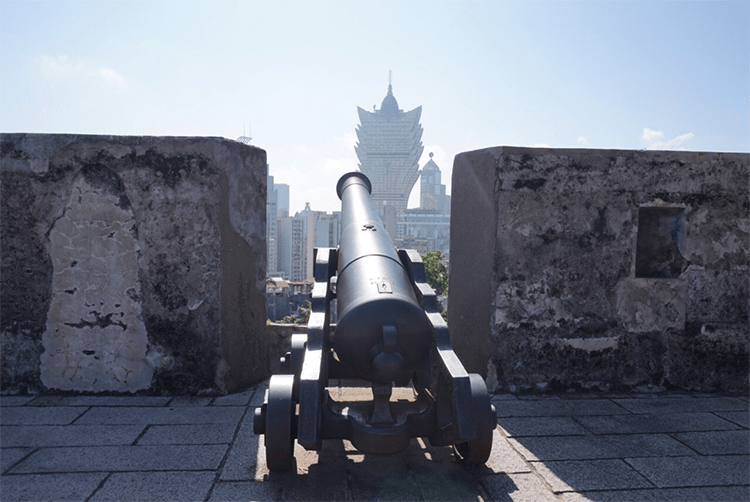Monte Fort: Discover Macau History at the UNESCO Fortress
Introduction: Standing on the High Ground
Standing on the Macau Peninsula’s high point—Monte Fort (Fortaleza do Monte)—you can almost hear 17th-century cannon fire and the rise and fall of colonial tides. Built by the Portuguese as a military stronghold, the fort preserves 400 years of East–West encounters. Now part of the UNESCO-listed Historic Centre of Macau and open to the public for free, its ramparts offer sweeping views where the old Ruins of St. Paul meet neon-lit casinos.
1. Core Highlights: A Military Fortress and World Heritage Site
One-line summary: Macau’s oldest defensive work, a UNESCO site that witnessed colonial history and cultural fusion.
Monte Fort was constructed between 1617 and 1626 as an ancillary defense for St. Paul’s Church and later became the governor’s residence and military command center. Its key selling points:
– UNESCO World Heritage status: Inscribed in 2005 as part of the Historic Centre of Macau.
– Military significance: Successfully helped repel the Dutch invasion in 1622; the famed “St. John cannon” remains on display.
– Panoramic viewpoint: At 52 meters above sea level, it’s the best vantage point to view the Macau Peninsula’s blend of heritage and modernity.
2. Historical Depth: From Cannon Fire to Cultural Repository
2.1 Colonial-era military engineering
The fort’s walls form an irregular quadrilateral up to 9 meters high and 3 meters thick. Originally armed with 32 cannons, it was among the most formidable defenses in 17th-century East Asia. On June 24, 1622, the Battle of St. John unfolded here, when Portuguese defenders used the fort’s artillery to drive off the Dutch East India Company. The original St. John cannon still stands in its historical position, its inscriptions telling the story of that dramatic day.
2.2 Macau Museum: 400 years below ground
In 1998 the fort’s interior was converted into the Macau Museum, whose underground galleries trace Macau’s evolution from fishing village to international port. Exhibits are organized across three floors:
– History and culture: Portuguese navigation, Sino-Portuguese trade, and local religious practices.
– Folk life: Re-creations of traditional teahouses, weddings, and festivals.
– Contemporary arts: Displays reflecting Macau’s post-handover cultural diversity.
Note: The museum is closed on Mondays; opening hours are 10:00–18:00.

3. Scenic Experience: Fort Ramparts and Panoramic Views
3.1 Best times to visit
– Early morning or late afternoon: Avoid midday heat and capture softer light for photos.
– Rainy or misty days: The weather can add atmospheric character to the walls, though watch for slippery stone steps.
3.2 Must-see viewpoints
– South wall: Faces the Grand Lisboa and modern skyscrapers—striking contrast with the old city.
– North gun positions: Look out toward Zhuhai’s Hengqin Island; on clear days you may even see the Hong Kong–Zhuhai–Macau Bridge.
4. Visitor Tips: Free Access, Easy Exploration
4.1 Getting there
– From the Macau Peninsula: A 10-minute walk up the slope from the Ruins of St. Paul’s (St. Paul’s Front) or take a local bus to the “Ruínas de S. Paulo / St. Paul’s” stop.
– From Taipa/Coloane: Take buses MT4 or 26A to “Praça Ferreira do Amaral” then walk about 15 minutes uphill.
4.2 Suggested itinerary
1. Morning: Visit the Ruins of St. Paul’s, then climb the stone steps to Monte Fort (about 15 minutes).
2. Midday: Rest on the fort’s plaza and enjoy panoramic views.
3. Afternoon: Explore the Macau Museum (allow 1–2 hours).
Fitness note: The route includes slopes and staircases but offers rest areas and is suitable for most visitors.

5. Practical Information: Free Entry, No Reservation Needed
– Fort opening hours: 07:00–19:00; Macau Museum: 10:00–18:00 (closed Mondays).
– Admission: The fort is free. Macau Museum: MOP 15 for adults (roughly US$2); student discounts available.
– Languages: Audio guides in Chinese, Portuguese, and English are provided at the museum.
– Nearby dining: The Portuguese restaurant “Casa do Tomate” near the fort entrance is known for its baked bacalhau rice.
Conclusion: A Time Capsule Not to Miss
Monte Fort is more than a military relic; it’s the key to understanding Macau. Touch a 17th-century cannon, gaze across a 21st-century skyline, and descend into a museum that narrates four centuries of cultural fusion. If you’re short on time, leave at least two hours here—free, convenient, and unforgettable.


